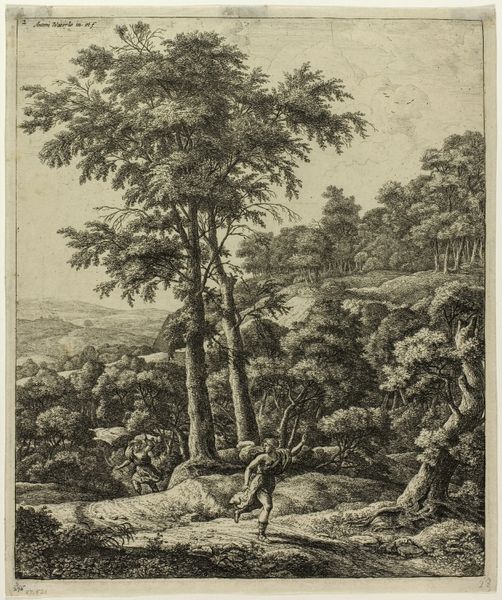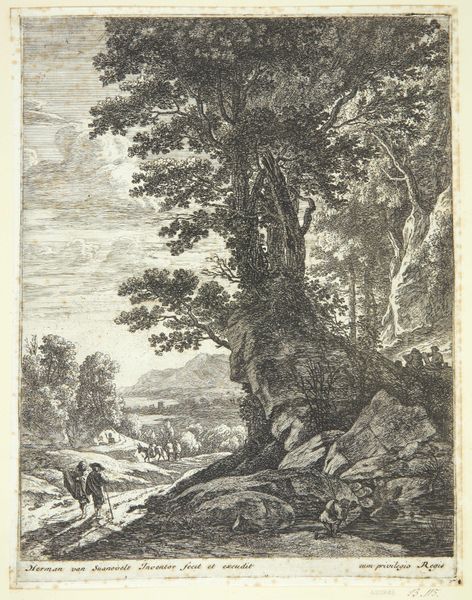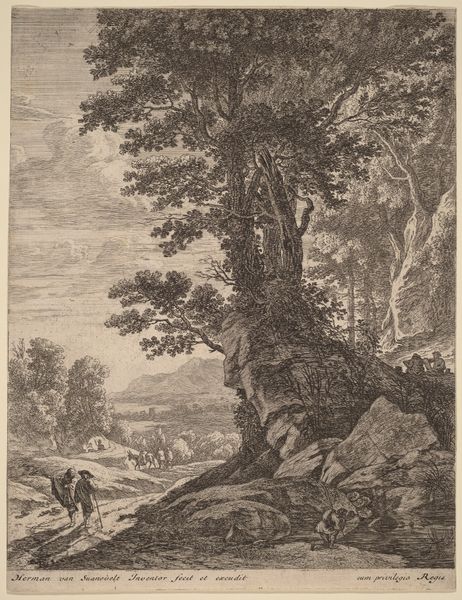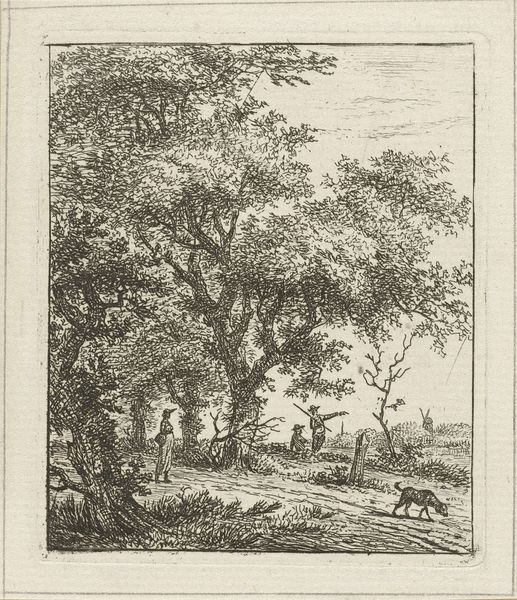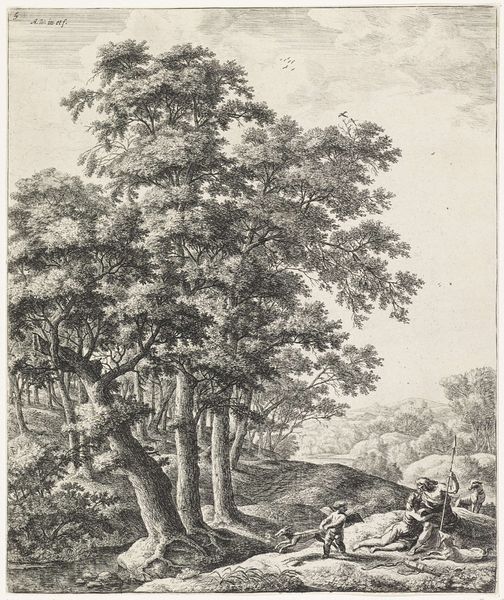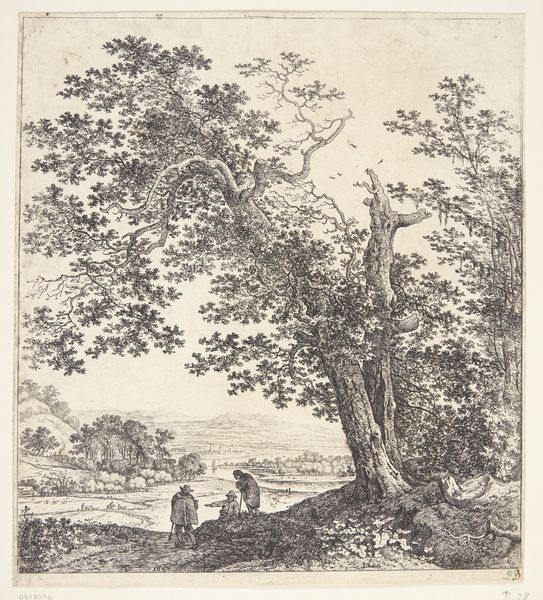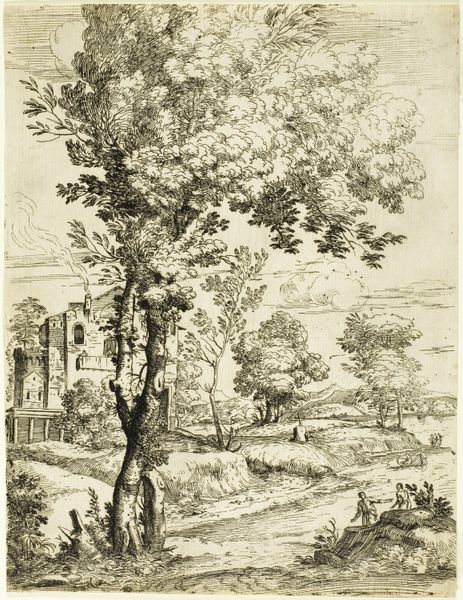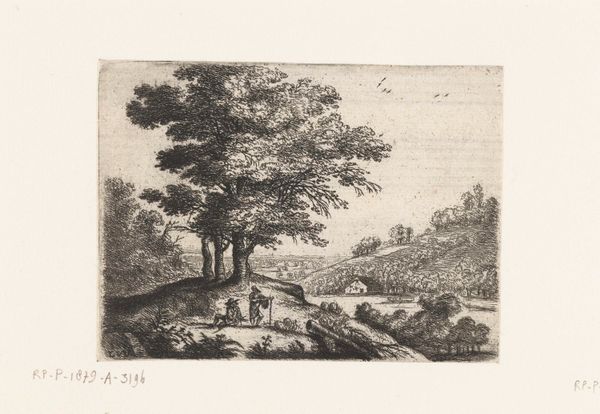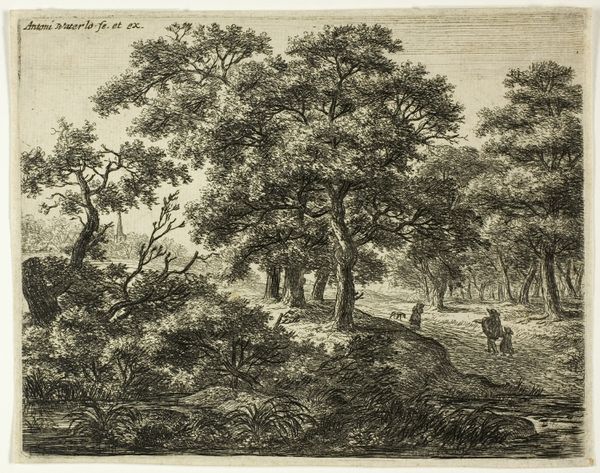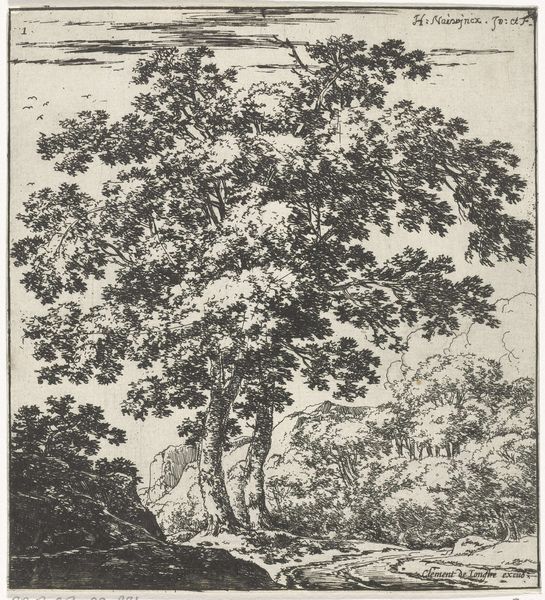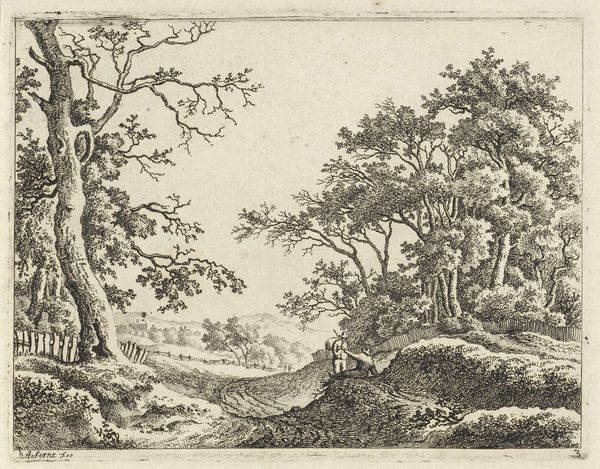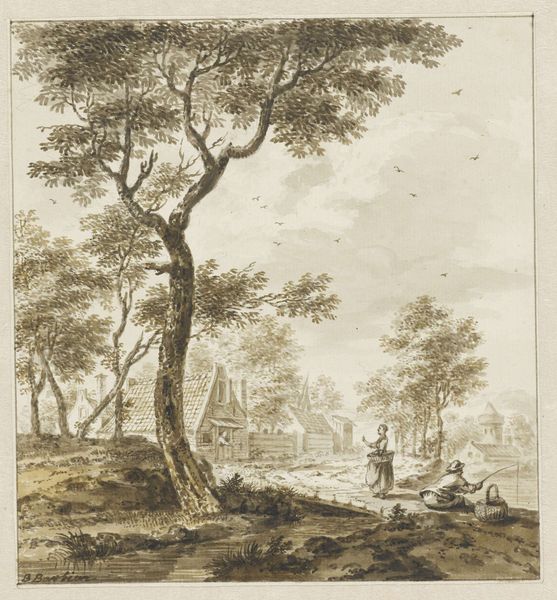
print, etching
#
ink drawing
#
dutch-golden-age
# print
#
etching
#
landscape
#
line
#
realism
Dimensions: 273 mm (height) x 231 mm (width) (bladmaal)
Editor: So, this is Herman Saftleven’s "Skovklædt bakkeskråning," an etching from 1644. It has this intricate, almost obsessive detail in the trees... kind of a quiet intensity. What strikes you about this landscape? Curator: The detail, as you pointed out, is key. But it's not just detail for detail's sake. Consider the Dutch Golden Age context: this landscape isn't just a pretty picture. It speaks to the burgeoning Dutch Republic’s relationship with its land. Who has access? Who benefits? Look closer – are these figures in the middle simply enjoying a walk? Or do they represent something else, perhaps land surveyors or hunters, subtly asserting control? Editor: I hadn't considered that. I was just admiring the realism. Is that unusual for the time? Curator: Realism in itself isn't groundbreaking, but *how* it's deployed is crucial. Ask yourself: What’s absent? We see nature, but where are the signs of the poor, the marginalized? The etching seems to carefully curate a particular vision of prosperity and control. Who is allowed into this curated space? Whose stories are omitted? Editor: So, by showing what’s there, it’s also concealing what’s not… I never thought about landscape art having a political message. Curator: Precisely! Think about the act of observing: this image encourages a certain kind of viewing, a possessing gaze. Does it make you reconsider your own position as a viewer? Editor: It does. It’s more than just a pretty scene; it’s a statement, a curated narrative about land and power. Thanks for pointing that out. Curator: My pleasure. Remember, art always exists within – and often comments on – a broader socio-political landscape. Question everything you see, and everything you *don't* see.
Comments
No comments
Be the first to comment and join the conversation on the ultimate creative platform.
